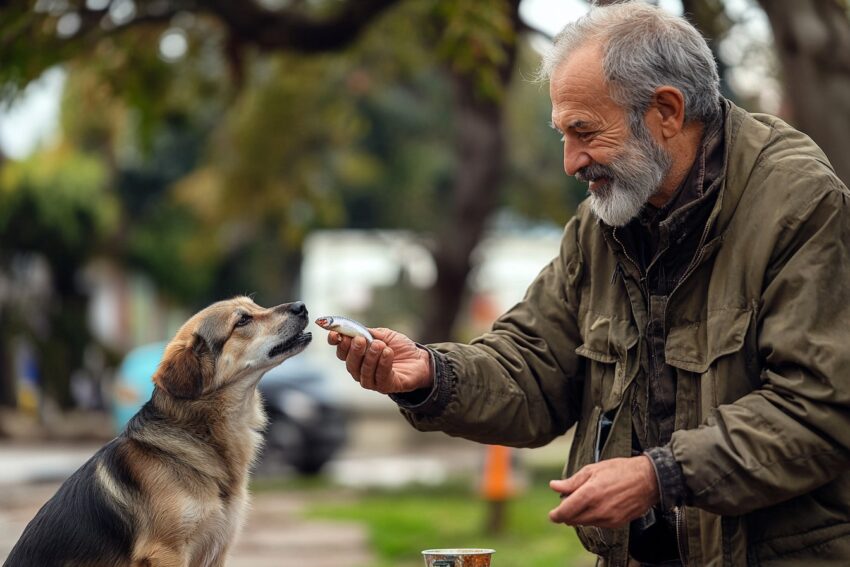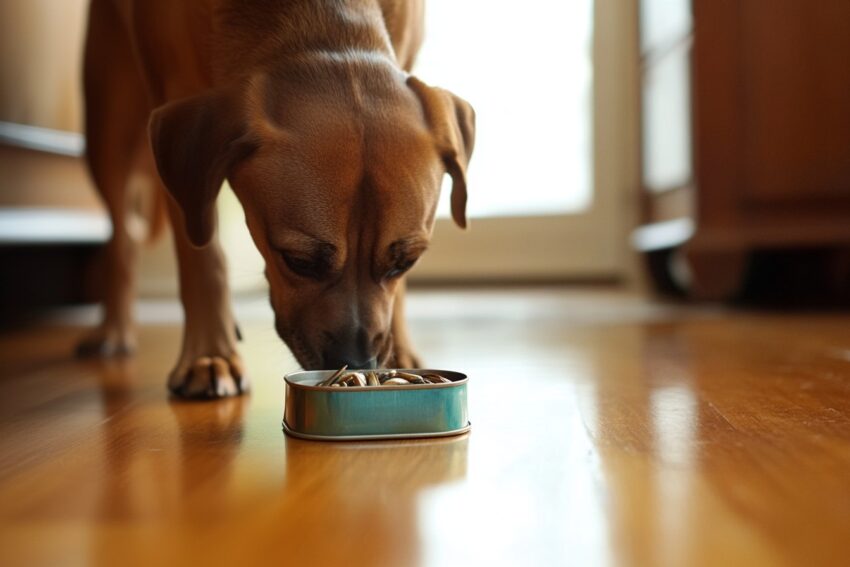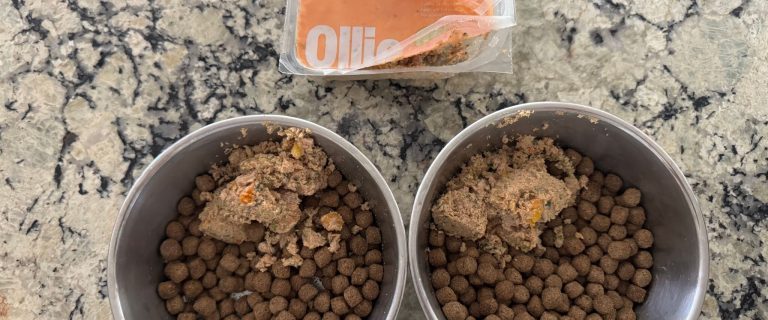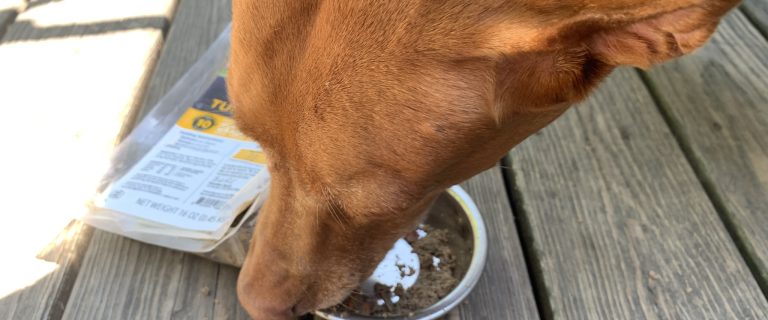Can dogs eat sardines? Sardines may not be the first food that comes to mind when planning your dog’s meals, but they’re actually a healthy and flavorful treat for many pups. Packed with nutrients and relatively affordable, sardines can be a fantastic addition to your dog’s diet when given properly.
In this post, we’ll explore the benefits of feeding sardines to your dog, the types they can safely eat, potential risks, and how to serve them. Plus, we’ll answer some frequently asked questions about feeding sardines to dogs.
Benefits of Feeding Sardines to Your Dog

Rich in Omega-3 Fatty Acids
Sardines are an excellent source of omega-3 fatty acids, which support skin health, reduce inflammation, and promote a shiny coat. These essential fats also benefit joint health and can help alleviate symptoms of arthritis in older dogs.Excellent Protein Source
Sardines provide high-quality, easily digestible protein, which is crucial for muscle development, tissue repair, and overall energy. This makes them an ideal snack or meal topper for active dogs.Packed with Vitamins and Minerals
Sardines are loaded with essential nutrients like vitamin D, vitamin B12, calcium, and selenium. Vitamin D is vital for bone health, while B12 supports nervous system function and energy metabolism. Calcium and selenium contribute to strong bones and antioxidant defenses.Heart-Healthy Benefits
The omega-3s in sardines also support cardiovascular health by reducing inflammation, lowering blood pressure, and improving circulation. Dogs with heart conditions may particularly benefit from this nutrient-packed food.Low Mercury Levels
Compared to larger fish like tuna, sardines have significantly lower mercury levels due to their shorter lifespan. This makes them a safer seafood option for dogs.
What Types of Sardines Can Dogs Eat?
Not all sardines are created equal, and how they’re prepared makes a big difference in their safety for dogs. Here’s what to look for:
- Canned in Water: Sardines packed in water are the safest option for dogs. Avoid those in oil, which can add unnecessary fat and calories to your dog’s diet.
- No Added Salt or Seasonings: Many canned sardines contain added salt or spices that are harmful to dogs. Choose unsalted, plain sardines.
- Fresh Sardines: If you have access to fresh sardines, they’re a great option. Just make sure they’re properly cleaned and cooked to avoid any risks from raw fish.
- Freeze-Dried Sardines: These are a convenient option for training treats or meal toppers, as they retain most of their nutritional benefits without the mess of fresh or canned fish.
Hot Tip: Go Wild for Wild-Caught Sardines
When choosing sardines for your dog, opt for wild-caught varieties whenever possible. They’re less likely to contain harmful contaminants like antibiotics or artificial additives often found in farm-raised fish. Plus, wild-caught sardines typically have higher levels of omega-3 fatty acids, giving your pup an extra nutritional boost!
Risks of Sardines for Dogs
While sardines can be a healthy treat, they aren’t without risks. Here’s what to watch for:
High Fat Content
Sardines are naturally high in fat. While this is beneficial in moderation, feeding too many can lead to weight gain or pancreatitis in dogs prone to these issues.Choking Hazards
Bones in sardines are generally soft enough for dogs to chew and digest, but smaller dogs or gulpers may still be at risk of choking. Always supervise your dog when feeding sardines.Allergies
Some dogs may have fish allergies. Introduce sardines gradually to watch for any adverse reactions, such as itching, vomiting, or diarrhea.Salt and Additives
Avoid sardines packed in brine, oil, or with added seasonings. These additives can cause digestive upset or even toxicity in dogs.Overfeeding Risks
Feeding too many sardines can upset the balance of your dog’s diet, leading to nutrient imbalances over time.
I can tell you from personal experience how important it is to avoid going overboard. When Freya has too many sardines, she gets a very upset stomach (and all of the unpleasant messes that come with that).
How to Give Your Dog Sardines
Introducing sardines to your dog’s diet is simple and safe when done correctly:
- Choose the Right Type: Opt for sardines canned in water with no added salt or fresh, properly cleaned sardines.
- Start Small: Begin with a small portion to ensure your dog tolerates them well.
- Serve as a Treat or Meal Topper: Add sardines to your dog’s regular meals or offer them as a high-value treat.
- Mash for Smaller Dogs: For smaller dogs, mash the sardines to make them easier to eat and reduce the risk of choking.
- Monitor Portion Sizes: Limit sardines to once or twice a week as an occasional treat.

FAQs about Dogs & Sardines
Are canned sardines safe for dogs?
Yes, canned sardines are safe for dogs as long as they are packed in water without added salt or seasonings. Avoid sardines in oil or brine.
How many sardines can a dog have at once?
What canned fish can dogs eat?
In addition to sardines, dogs can safely eat canned salmon, mackerel, and herring, provided they are packed in water and free of salt or added flavorings.
What fish can dogs not eat?
Avoid feeding dogs fish high in mercury, such as tuna or swordfish. Also, steer clear of raw fish or fish with small, brittle bones that could pose a choking hazard.
Are sardine bones safe for dogs?
The bones in canned sardines are generally soft and safe for dogs to eat. However, fresh sardine bones should be removed before feeding to avoid any risks.
Can sardines help with my dog’s allergies?
The omega-3 fatty acids in sardines may reduce inflammation and alleviate symptoms of environmental allergies, such as itching or skin irritation.
Can dogs with pancreatitis eat sardines?
Dogs with pancreatitis should avoid high-fat foods, including sardines. Consult your veterinarian before adding sardines to your dog’s diet if they have this condition.
Are freeze-dried sardines as nutritious as fresh?
Yes, freeze-dried sardines retain most of their nutritional value and are a convenient, mess-free alternative to fresh or canned options.
Conclusion
Author
-

Hi there! I'm Nicole, the editor-in-chief and one of the writers here at DogVills. I've been a dog owner for most of my adult life and a dog lover for much longer than that. I grew up with a wonderful German Shepherd named Jake, who I loved SO much that I named my son after him. When I'm not writing for DogVills or my own site, Pretty Opinionated, I love spending time with my teenager (when he actually lets me) and my Pharaoh Hound, Freya. I'm also an avid reader AND a total TV fanatic.
View all posts



